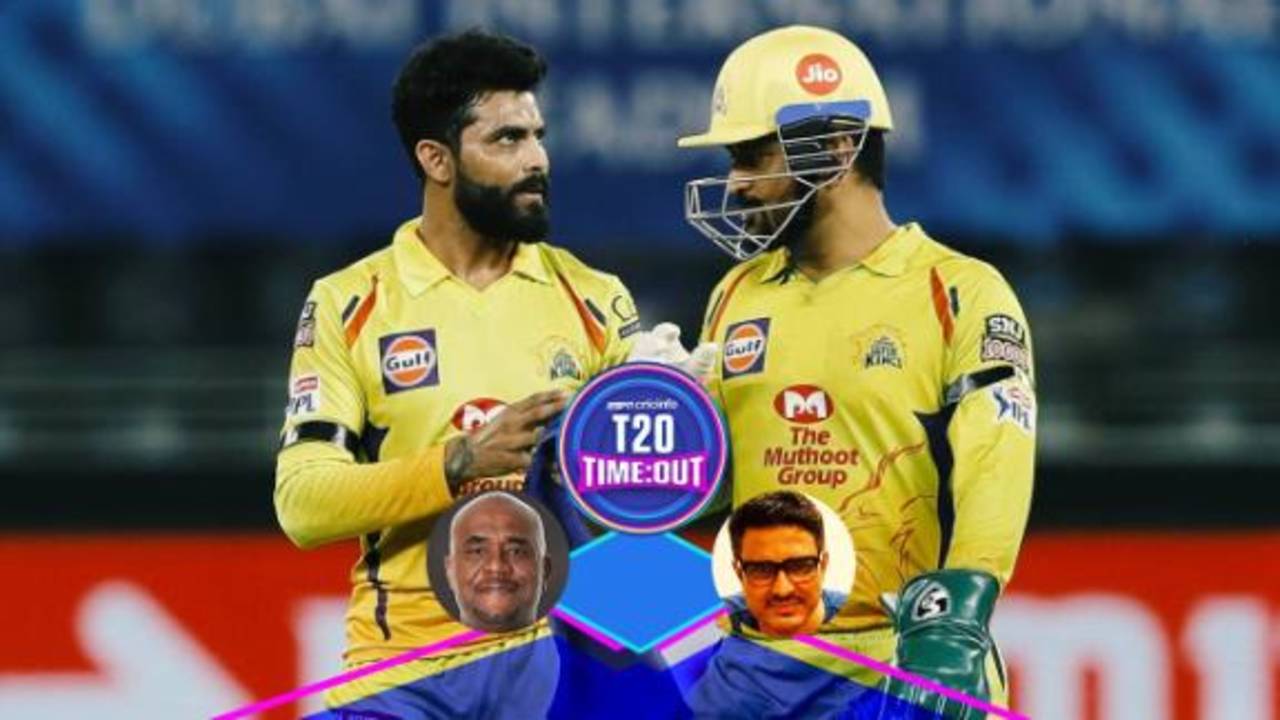Talking Points: What can Chennai Super Kings do about their batting?
What's going wrong for Jadeja, how did Delhi Capitals stop Dhoni and four other questions from the game
Chennai Super Kings were always going to struggle to fill the hole left by Suresh Raina's departure, but with Ambati Rayudu injured, this is a quick rundown of their batting resources after the match against Delhi Capitals.
- Shane Watson: Played just 16 games since the last IPL and has just one 15+ score this season
- M Vijay: A fringe player in the IPL since 2016; has struggled this season; of 44 balls faced, has been beaten 13 times and has defended or looked for a single 20 times
- Faf du Plessis: The only top-order player in form; scored 173 across first three games
- Ruturaj Gaikwad: Playing first IPL season; control percentage of just 54.54% in 11 balls faced so far
- Kedar Jadhav: Strike-rate of just 95.85 last season and 129.72 in IPL 2020
- MS Dhoni: Self-admittedly needs time to get back in form after 437 days without cricket
- Sam Curran: Showed promise with 18 off 6 against Mumbai Indians and 17 off 6 against Rajasthan Royals
- Ravindra Jadeja: Has underwhelmed with scores of 10, 1*, and 12

Shreyas Iyer brought on Axar Patel in the second over specifically to bowl to Watson. In eight previous innings, he had dismissed Watson five times and gone at just 6.63 runs an over. Also, left-arm spin tends to stifle Watson. The plan worked as Axar dismissed Watson in his second over.

Jadeja became the first spinner to go for 40+ runs in three consecutive IPL games after he went for 44 runs off his four overs. His statistics so far are in stark contrast to previous seasons, when he was one of the more economical spinners in the league. One reason is that the pitches have not suited him as much as the Chepauk pitch does. He has bowled similar lines and lengths to previous seasons, but balls that usually work for him have not. For example, he has bowled eight full balls this season for 23 runs, where pitching it right up is often his strength. His short-of-length balls have also not worked - they've gone at a strike-rate of 166.67. Jadeja has always struggled against left-hand batsmen, but this season he is going at 9.79 per over against right-handers too.
Not a single six in the last 10 overs for #DelhiCapitals . If you lose only 3 wickets in 20 overs, you expect the total a lot closer to 200. Runs on the board but this total is not beyond #CSK reach. #CSKvDC #IPL2020
— Aakash Chopra (@cricketaakash) September 25, 2020
Simple: Get their 140kph+ bowlers to dig it in short. Since 2018, Dhoni had struck at just 124.00 against short and short-of-length balls from right-arm quicks in the IPL. Half of the 12 balls Capitals bowled to him were short, and he got just five runs off them, eventually edging a slower bouncer from Rabada.
Every captain who has won the toss this season has chosen to field, but in seven games, the team batting first has won five times and tied once. This is a complete change from the past two seasons, in which captains who fielded first ended up on the winning side 57% of the time. It's still early to judge what exactly is causing this shift and whether it will continue, but one factor is that the first-innings scores have been high - the past four games have all had 170+ first-innings scores - which causes scoreboard pressure for the chasing team. It's not clear yet how much of an effect dew has in the second innings and whether the pitches slow down.
Dustin Silgardo is an assistant editor at ESPNcricinfo
